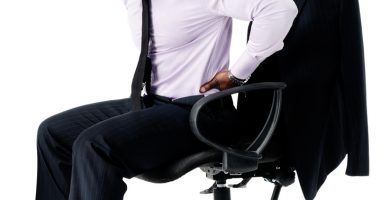Horse riding: the influence between rider and horse
As an Osteopath and horse rider myself, I have treated many horse riders and
have seen how injuries or imbalances in the rider can have an effect on the
horse.
If a rider if suffering with back or hip pain etc, he or she will undoubtedly be
compensating for this in their riding position and therefore will be transferring
the problem down through the horse, particularly if the injury results in altered
weight bearing. Low back pain may cause a rider to lean forward in order to
achieve comfort and this transfers more weight through the horse’s withers
and this can restrict the horses shoulder movement. Consequently, the rider
influences the musculoskeletal system of the horse, so can be the cause of a
horses back problem, heaviness/stiffness of a rein/s, head tilt or lameness. It is
vital that the rider has a good body alignment, balance and flexibility, in order to
achieve efficient riding. Osteopathy does not only target the symptoms a rider
presents with, but also detects unrecognised areas of restricted movement.
Osteopaths believe the whole body will work well only if your body is free from
restriction and in good structural balance.
Injuries to the pelvis are typically associated with high energy traumas such as a
horse rider hitting the pommel of the saddle, which forces the back of the pelvis
apart or a fall which can cause a direct compression, a shearing force or an
abrupt rotation through the pelvis. These type of injuries can cause a functional
leg length discrepancy.
In clinic we often see patients with a leg length discrepancy; this is simply
defined as a condition where one leg appears shorter than the other. Leg length
discrepancy has been split into two categories:
(1) Structural: which is a true shortening of limb caused by congenital,
traumatic (e.g. a broken leg) or pathological origins (e.g. wear and tear in
one hip)
(2) Functional: this is the most common and develops as result of altered
mechanics in the lower body, such as foot over pronation or supination,
muscle or joint imbalances and incorrect pelvic positioning.
Leg length discrepancies can still remain even when you’re sat in the saddle.
They may be evident when one stirrup is required to be longer than the other
for comfort. The difference in stirrup lengths may also alter how the weight
distribution is transferred to the horse and this may aggravate any existing
problems the horse has or contribute to new ones. The difference in leg lengths
also results in larger forces being transferred through some of the joints,
these could include ankle, knees, hips and sacro-iliac (SI) joints. Prolonged
compression through a joint will eventually lead to irritation and inflammation
in that area. In my clinical experience I have found that either muscle tension or
restriction in the pelvis to be the main cause of leg length discrepancy.
You may not be aware that you have a leg length discrepancy or significant
restriction within the body, because they are not always a problem in the
short term. If these imbalances remain they will eventually cause pain locally
or elsewhere. An Osteopath can help to improve any pelvic or leg length
discrepancy or muscle imbalances/strain/pain due to trauma by improving
muscle tone and joint function. If you have any questions then feel free to
contact me at Avenue Clinic on 728798 or at admin@avenueclinic.co.uk.
References:
Chila, A. (2011). Foundations of Osteopathic Medicine, 3rd Ed. Lippincott
Williams & Wilkins, China.
Dalton, E. (2007). Short Leg Syndrome, Part One. Massage Today, 7 (8)
Dalton, E. (2007). Short Leg Syndrome, Part Two. Massage Today, 7 (11)
Mulhall, K., Khan, Y., Ahmed, A., O’Farrell, D., Burke, T. and Moloney, M. (2002).
Diastasis of the pubic symphysis peculiat to horse riders: modern aspects of
pelvic pommel injuries. British Journal of Sports Medicine, 36, pp. 74-75.
http://www.osteopathy.org/MXENQ85VAJ



